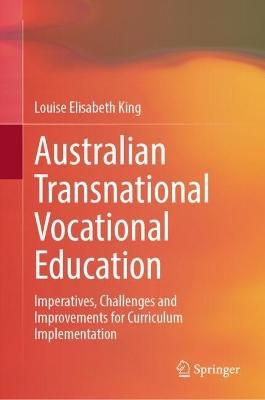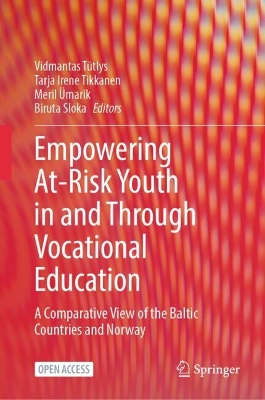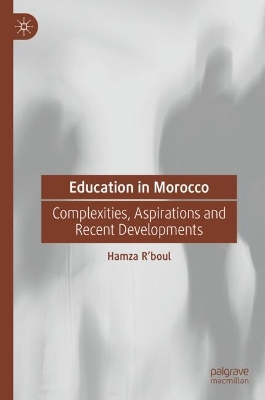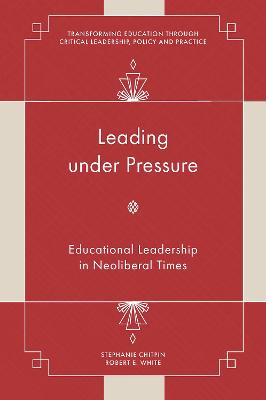Standing of Vocational Education and the Occupations It Serves
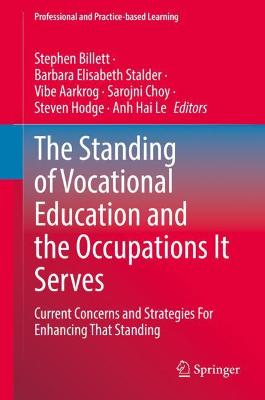 portes grátis
portes grátis
Standing of Vocational Education and the Occupations It Serves
Current Concerns and Strategies For Enhancing That Standing
Stalder, Barbara Elisabeth; Le, Anh Hai; Aarkrog, Vibe; Hodge, Steven; Billett, Stephen; Choy, Sarojni
Springer Nature Switzerland AG
04/2022
401
Dura
Inglês
9783030962364
15 a 20 dias
876
Descrição não disponível.
Section One - The standing of vocational education: Perennial issues, emerging concerns and ways forward.- 1. The standing of vocational education: a global concern with diverse meanings and implications (Barbara E. Stalder (Bern University of Teacher Education), Sarojni Choy and Anh Hai Le (Griffith University, Australia).- 2. Enhancing the standing and status of vocational education (Vibe Aarkrog (Aarhus University, Denmark) Stephen Billett and Steven Hodge (Griffith University, Australia).- Section Two - Issues, sources and consequences of the standing and status of vocational education.- 3. Understanding the purpose and standing of technical and vocational education and training (Susan James Relly, University of Oxford, United Kingdom).- 4. Improving the image of VET: Perspectives from the developed and developing world (Stephen Billett & Anh Hai Le, Griffith University, Australia).- 5. A perspective on the challenges for the standing of the dual apprenticeshipsystem (Thomas Deissinger (University of Konstanz, Germany).- 6. Shaping young people's decision-making about post-school pathways: Institutional and personal factors (Stephen Billett, Darryl Dymock, Steven Hodge and Sarojni Choy (Griffith University, Australia).- Section Three - Country studies of the standing of vocational education and the occupation it serves.- 7. Alternance training as a way to improve attractivity of vocational education program in France (Laurent Veillard, Agrosup Dijon, France).- 8. Promoting the Standing of VET in Finland: Balancing Between Flexibility and Regulation- (Heta Rintala (Haeme University of Applied Sciences) & Petri Nokelainen (Tampere University).- 9. Attractiveness of vocational education and training in India: Empirical findings of perspectives of employers, students and their parents and teachers (Matthias Pilz & Muthuveeran Ramayamy, University of Cologne, Germany).- 10. The quality and standing of school-based Norwegian VET (Hilde Hiim,Oslo Metropolitan University, Norway).- 11. The standing of vocational education in Vietnam: Implications for enactments (Anh Hai Le, Griffith University, Australia).- 12. Enhancing the standing of VET in Swiss Upper secondary education (Barbara E. Stalder, Bern University of Teacher Education, Switzerland).- 13. The interrelations of learning environment, enrolment in and completion of VET: A Danish case (Vibe Aarkrog, Danish School of Education, Aarhus University).- 14. Elevating the Standing of Vocational Education and Training in Romania (Maria-Carmen Pantea, BBU Cluj Napoca, Romania).- Section Four - enhancing the standing and status of vocational education: an Australian study.- 15. Investigating enhancing the standing of vocational education and the occupation it serves: purposes: processes and phases, Anh Hai Le, Stephen Billett, Sarojni Choy and Steven Hodge (Griffith University, Australia).- 16. Perspectives of school students, parents, teachers (Phase 1) Steven Hodge, Stephen Billett, Sarojni Choy (Griffith University, Australia).- 17. Surveys of students, parents and teachers (Phase 2) Sarojni Choy, Anh Hai Le, Stephen Billett (Griffith University, Australia).- 18. Issues for and suggestions to enhance the standing of vocational education and the occupation it serves (Phase 3) Darryl Dymock, Stephen Billett, Sarojni Choy (Griffith University, Australia).
Este título pertence ao(s) assunto(s) indicados(s). Para ver outros títulos clique no assunto desejado.
Post-school pathways;Tertiary education;Personal social and economic development;societal sentiments;Standing of occupations and vocational education;status of vocational education;image of Vocational education;decision-making about post-school pathways;vocational education program in France;Standing of Vocational Education in Finland;vocational education and training in India;school-based Norwegian vocational education;standing of vocational education in Vietnam;Swiss Upper secondary education;Vocational Education and Training in Romania;vocational education in Australia
Section One - The standing of vocational education: Perennial issues, emerging concerns and ways forward.- 1. The standing of vocational education: a global concern with diverse meanings and implications (Barbara E. Stalder (Bern University of Teacher Education), Sarojni Choy and Anh Hai Le (Griffith University, Australia).- 2. Enhancing the standing and status of vocational education (Vibe Aarkrog (Aarhus University, Denmark) Stephen Billett and Steven Hodge (Griffith University, Australia).- Section Two - Issues, sources and consequences of the standing and status of vocational education.- 3. Understanding the purpose and standing of technical and vocational education and training (Susan James Relly, University of Oxford, United Kingdom).- 4. Improving the image of VET: Perspectives from the developed and developing world (Stephen Billett & Anh Hai Le, Griffith University, Australia).- 5. A perspective on the challenges for the standing of the dual apprenticeshipsystem (Thomas Deissinger (University of Konstanz, Germany).- 6. Shaping young people's decision-making about post-school pathways: Institutional and personal factors (Stephen Billett, Darryl Dymock, Steven Hodge and Sarojni Choy (Griffith University, Australia).- Section Three - Country studies of the standing of vocational education and the occupation it serves.- 7. Alternance training as a way to improve attractivity of vocational education program in France (Laurent Veillard, Agrosup Dijon, France).- 8. Promoting the Standing of VET in Finland: Balancing Between Flexibility and Regulation- (Heta Rintala (Haeme University of Applied Sciences) & Petri Nokelainen (Tampere University).- 9. Attractiveness of vocational education and training in India: Empirical findings of perspectives of employers, students and their parents and teachers (Matthias Pilz & Muthuveeran Ramayamy, University of Cologne, Germany).- 10. The quality and standing of school-based Norwegian VET (Hilde Hiim,Oslo Metropolitan University, Norway).- 11. The standing of vocational education in Vietnam: Implications for enactments (Anh Hai Le, Griffith University, Australia).- 12. Enhancing the standing of VET in Swiss Upper secondary education (Barbara E. Stalder, Bern University of Teacher Education, Switzerland).- 13. The interrelations of learning environment, enrolment in and completion of VET: A Danish case (Vibe Aarkrog, Danish School of Education, Aarhus University).- 14. Elevating the Standing of Vocational Education and Training in Romania (Maria-Carmen Pantea, BBU Cluj Napoca, Romania).- Section Four - enhancing the standing and status of vocational education: an Australian study.- 15. Investigating enhancing the standing of vocational education and the occupation it serves: purposes: processes and phases, Anh Hai Le, Stephen Billett, Sarojni Choy and Steven Hodge (Griffith University, Australia).- 16. Perspectives of school students, parents, teachers (Phase 1) Steven Hodge, Stephen Billett, Sarojni Choy (Griffith University, Australia).- 17. Surveys of students, parents and teachers (Phase 2) Sarojni Choy, Anh Hai Le, Stephen Billett (Griffith University, Australia).- 18. Issues for and suggestions to enhance the standing of vocational education and the occupation it serves (Phase 3) Darryl Dymock, Stephen Billett, Sarojni Choy (Griffith University, Australia).
Este título pertence ao(s) assunto(s) indicados(s). Para ver outros títulos clique no assunto desejado.
Post-school pathways;Tertiary education;Personal social and economic development;societal sentiments;Standing of occupations and vocational education;status of vocational education;image of Vocational education;decision-making about post-school pathways;vocational education program in France;Standing of Vocational Education in Finland;vocational education and training in India;school-based Norwegian vocational education;standing of vocational education in Vietnam;Swiss Upper secondary education;Vocational Education and Training in Romania;vocational education in Australia

